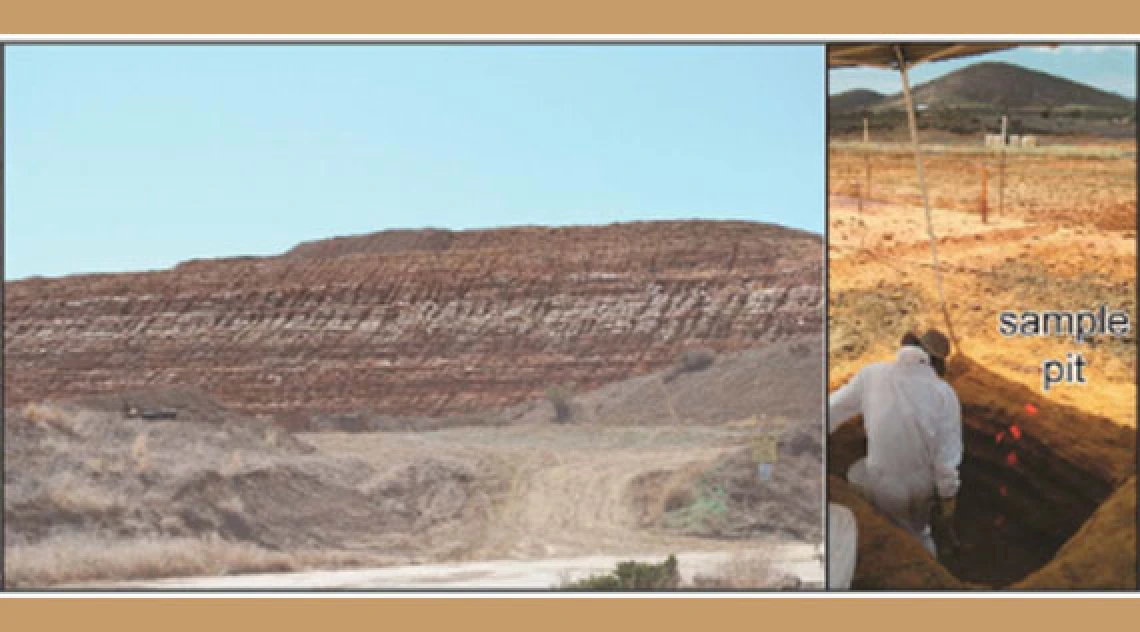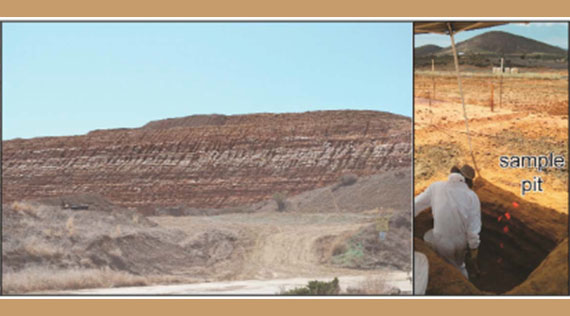UA SRP investigators collaborate to publish paper on weathering and bioaccessibility of toxic particles

 A recent publication in the journal GeoHealth examines the impact of the weathering of tailings on the biological availability of arsenic, lead and zinc in the mine tailings dust from the Iron King Mine and Humboldt Smelter Superfund site (IKMHSS). The UA SRP has been involved with this site since it was listed as a Superfund site in 2008.
A recent publication in the journal GeoHealth examines the impact of the weathering of tailings on the biological availability of arsenic, lead and zinc in the mine tailings dust from the Iron King Mine and Humboldt Smelter Superfund site (IKMHSS). The UA SRP has been involved with this site since it was listed as a Superfund site in 2008.
This latest publication, which made the cover of GeoHealth, is a collaboration amongst the different UA SRP Projects and reflects the interdisciplinary nature of our program.
Authors include Andrew Thomas and Robert Root, former UA SRP Trainees, both mentored by Dr. Jon Chorover, all from the Department of Soil, Water and Environmental Science; Dr. Clark Lantz, UA SRP Associate Director from the College of Medicine; and Dr. Eduardo Sáez, UA SRP investigator from the College of Engineering.
Legacy sulfide‐ore‐derived mine tailings, like those found at IKMHSS, often contain elevated concentrations of toxic metal(loid)s, such as arsenic, lead and zinc. Through natural weathering processes, such tailings material generates fine particulate matter (PM10) that may be transported off site as “geo‐dust”, thereby representing a significant health risk to proximal communities.
This study examined the impacts of oxidative weathering of sulfide‐ore derived tailings on the biological availability of arsenic, lead, and zinc when tailings PM10 were introduced into synthetic lung and gastric fluids.
Results show that the natural oxidative process of weathering that occurs in the decades following tailings deposition decreased the bioaccessibility of the arsenic and lead present in the PM10, whereas zinc bioaccessibility increased with increased weathering under semi‐arid environment, and we identified the molecular processes controlling these observations.
According to Chorover, the UA SRP is the perfect place to carry out this type of research. “The Superfund Research Program is a great context for doing this kind of work, because it brings together people from diverse disciplines, which is needed to attack these kinds of problems. The authorship of our paper really reflects that diversity”, Dr. Chorover said.
Publication:
Thomas, A. N., Root, R. A., Lantz, R. C., Sáez, A. E., & Chorover, J. (2018).Oxidative weathering decreases bioaccessibility of toxic metal(loid)s in PM10emissions from sulfide mine tailings.GeoHealth,2, 118–138. https://agupubs.onlinelibrary.wiley.com/doi/abs/10.1002/2017GH000118

